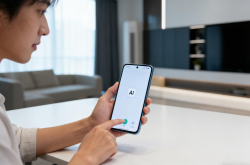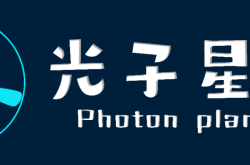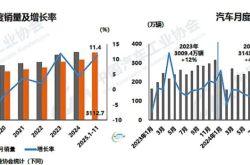Hunan Couple Creates Mobile Phone Glass Giant: Overnight Fortune with $14 Billion Market Cap
![]() 07/11 2025
07/11 2025
![]() 475
475
Lens Technology has been listed on the Hong Kong Stock Exchange today. At market close, its total market value stood at HK$104 billion.
Exactly a decade ago, Lens Technology was listed on the ChiNext board of the Shenzhen Stock Exchange.
- 01 -
The founder of Lens Technology is Zhou Qunfei, born in 1970 in a remote mountainous region of Xiangxiang, Hunan Province. She lost her mother at the age of five, and her father later went blind in an accident, plunging the family into hardship.
At 15, Zhou Qunfei dropped out of school and went to Shenzhen alone to find work.
In 1993, at the age of 23, Zhou Qunfei, with more than RMB 20,000 saved, rented a three-bedroom, one-living-room farmer's house in Bao'an, Shenzhen, along with her brother, sister-in-law, and other family members. She founded Hengsheng Glass Surface Processing Factory, the precursor to Lens Technology.
At the time, she couldn't have imagined that years later, she would revolutionize the precision aesthetics of global consumer electronics with glass.
After the turn of the millennium, Zhou Qunfei seized a career opportunity. A friend gave her an order for TCL flip phone panels, and she boldly applied watch glass manufacturing techniques to mobile phone panel production. This replaced easily scratched, heat-intolerant, and deformable organic glass screens with glass screens, solving a significant industry pain point.
This venture opened doors to more opportunities. Two years later, a pivotal opportunity that would change her fate arrived. Motorola was searching for a suitable glass screen supplier for the Razr V3 phone and found Zhou Qunfei's factory.
Faced with the challenge, Zhou Qunfei and her team overcame the ion exchange strengthening technology in three days and three nights. Their products' anti-drop performance surpassed German counterparts, successfully securing their first international order.
When engineers questioned the safety of the glass, fearing it might harm users, Zhou Qunfei confidently assured them, "Our glass will shatter into a spider web pattern and will never produce sharp edges."
In 2003, Zhou Qunfei founded Lens Technology, continuing to explore the application of glass craftsmanship in mobile phone panel production. A significant turning point for Lens Technology came in 2007. Steve Jobs was searching for a "touch-sensitive and extremely transparent" cover glass for the first-generation iPhone. Zhou Qunfei led her team to reduce the glass thickness from 1.1 mm to 0.7 mm and increase light transmittance to 92%. Since then, Lens Technology has left an indelible mark of "Made in China" in the global Apple supply chain.
For a long time, mobile phone giants such as Apple and Samsung have been key customers for Lens Technology, consistently generating revenue for the company.
In 2015, Lens Technology successfully listed on the Shenzhen Stock Exchange, setting six records, including "highest revenue and highest net profit" on the ChiNext board. Zhou Qunfei also topped the "2015 Hurun Rich List of China's Richest Women" with a fortune of RMB 50 billion, becoming the highly regarded "Queen of Global Mobile Phone Glass" and China's richest woman.
The following year, fluctuations in Apple's performance triggered a supply chain crisis. However, Zhou Qunfei was undeterred by challenges; instead, she seized this opportunity for a second evolution.
In the Changsha laboratory, products such as Tesla's central control curved glass, Huawei's foldable screen hinges, and even dexterous joints for humanoid robots are continuously being developed, as Lens Technology reshapes the "skeleton" of intelligent hardware.
Foreign media once commented, "Self-made Zhou Qunfei defines a new class of Chinese female entrepreneurs."
However, Zhou Qunfei herself has always downplayed her "female identity" and even changed her WeChat signature to "Fei Ge" (Brother Fei). As of March 13's close, Lens Technology's total market value reached RMB 128.4 billion.
In October 2024, Hurun Research Institute released the "2024 Hurun China Rich List," with Zhou Qunfei and her husband Zheng Junlong reclaiming the title of Hunan's richest couple with a fortune of RMB 63.5 billion.
- 02 -
Lens Technology Co., Ltd. (abbreviation: Lens Technology) is headquartered in Changsha, Hunan Province, with nine major R&D and production bases in Hunan, Guangdong, Jiangsu, and Vietnam.
Its products are widely used in various fields such as mid-to-high-end smartphones, smart wearables, tablets, laptops, all-in-one computers, new energy vehicles, smart home appliances, and photovoltaic products.
From a product perspective, smartphones and computer exterior structural components are its core offerings. From the curved glass cover of the iPhone to the hinge metal of foldable phones, these products, as thin as 0.7 mm, solve the balance of electronic devices' drop resistance, light transmittance (up to 92%), and extreme aesthetics.
In the first half of 2024, this business generated revenue of RMB 24.02 billion, accounting for up to 83.21%, serving as the backbone of Lens Technology's revenue.
In the field of smart cars, Lens Technology also excels. It provides central control curved glass, in-car display systems, and B-pillar components for models such as the Tesla Cybertruck, meeting the interaction and safety needs of smart cabins.
In the first half of 2024, this business generated revenue of RMB 2.716 billion, accounting for 9.41%. According to data, Lens Technology has established cooperative relationships with more than 30 domestic and foreign new energy and traditional luxury auto brands, covering the entire chain from technology research and development to product supply, potentially creating a second growth curve beyond its consumer electronics business.
In the field of AR/VR devices, Lens Technology's optical modules eliminate visual distortion in the virtual world through 3D microcrystalline glass. The outstanding immersive experience behind the Meta Quest Pro is inseparable from its optical coating technology. However, in the first half of 2024, this product generated only RMB 1.435 billion in revenue, accounting for 4.97%, and has not yet achieved economies of scale.
Moreover, Lens Technology is actively expanding into new areas, extending its precision manufacturing capabilities to the field of humanoid robot joint modules. Its independently developed dexterous hands, torso structural components, etc., aim at the precise motion needs of industrial and household service scenarios. Although currently in the technology reserve stage, they also demonstrate the company's forward-looking layout.
- 03 -
In terms of customers, Apple is Lens Technology's most critical partner.
In 2022, Apple contributed RMB 33.1 billion in revenue to Lens Technology, accounting for 71% of the total. In 2023, although this figure dropped to RMB 31.512 billion (accounting for 57.83%), Apple remained the backbone of its business. The deep bond between the two parties stems from their 2007 collaboration on the first-generation iPhone glass cover, jointly defining the technical standards for smartphone glass.
In 2022, although the second to fifth largest customers of Lens Technology were not disclosed, their sales all increased, with the sales of the second largest customer soaring to RMB 8.47 billion, accounting for 15.55% from less than 4%.
Besides Apple, Lens Technology has also established cooperation with numerous renowned industry clients such as Samsung, Xiaomi, OPPO, Huawei, Honor, Tesla, BMW, Mercedes-Benz, Audi, Volkswagen, BYD, Lixiang, NIO, and XPeng.
Financially, Lens Technology's revenue and net profit both show an increasing trend. In 2022, Lens Technology achieved annual revenue of RMB 46.699 billion (a year-on-year increase of 3.16%) and net profit of RMB 2.448 billion (a year-on-year increase of 18.25%). In 2023, revenue reached RMB 54.491 billion (a year-on-year increase of 16.69%) and net profit reached RMB 3.021 billion (a year-on-year increase of 23.42%). The core driving force comes from the recovery of the smartphone business (RMB 44.901 billion, a year-on-year increase of 17.50%).
As of the first three quarters of 2024, its revenue has reached RMB 46.228 billion (a year-on-year increase of 36.74%) and net profit has reached RMB 2.371 billion (a year-on-year increase of 43.74%). The trend of AI phone replacement has spurred the explosion of its vertical integration advantages.
It's worth noting that Lens Technology is a company predominantly driven by foreign sales revenue. From 2022 to 2023, sales revenue from abroad was RMB 382.66 billion and RMB 368.07 billion, respectively, accounting for 81.94% and 67.55% of revenue for the same period.
- 04 -
The consumer electronics components and assembly industry to which Lens Technology belongs boasts a substantial market size. The global market size is expected to increase from USD 1.05 trillion in 2024 to USD 1.18 trillion in 2028, with a compound annual growth rate of approximately 3% to 7.63%. The Chinese market will also grow concurrently, reaching a size of RMB 1.98 trillion in 2024 and continuing to expand in 2025.
However, it also faces numerous challenges.
In 2023, the global market size of this industry was approximately USD 1.2 trillion, displaying a "V-shaped" fluctuation from 2022 to 2024. In 2022, due to the shrinking global demand for consumer electronics, 67.82% of the 87 listed companies in the industry saw profit declines, with a median drop of 27.50%.
From the third quarter of 2023, inventory turnover days decreased from 97.88 days to 96.08 days, and the industry entered a recovery cycle. In 2024, benefiting from AI hardware iterations and the penetration of new energy vehicles, the revenue growth rate of leading enterprises rebounded to over 30%.
However, the industry's pain points are also evident. Firstly, there is pressure from technological iterations. The innovation cycle for consumer electronics has shortened to 12-18 months. Once product innovation lags or customer strategies adjust, corporate performance is prone to fluctuations.
Secondly, the cost rigidity under the heavy asset model restricts profit elasticity. The fixed asset scale of industry leading enterprises generally exceeds RMB 10 billion, while the net profit margin is only around 5%, reflecting the characteristics of high investment and long cycles in the precision manufacturing field.
Additionally, the cultivation of emerging markets is uncertain, intensifying competition. For example, although AI glasses are highly anticipated, corporate revenue falls short of expectations, and technical standards have not yet been unified, so market education still requires time.
- 05 -
Despite facing many challenges, Lens Technology still maintains significant advantages in the industry.
In its core business, Lens Technology is the world's only company to achieve mass production of 0.1mm UTG glass, securing 70% of Apple's UTG orders and exclusively supplying ultra-thin glass substrates. By collaborating with Corning on raw materials and adopting the central thinning process, it fully utilizes the advantages of UTG glass, such as ultra-thinness, wear resistance, good light transmittance, high strength, bendability, and good resilience, effectively solving the problem of creases.
As the global leader in glass covers, during its peak period, it was said that "one out of every two mobile phone glasses in the world is produced by Lens Technology." As early as 2019, its market share in the global glass cover market had reached an astonishing 55%, firmly occupying the leading position.
Lens Technology has also achieved remarkable results in new energy vehicles and AI hardware. It has over 30 automaker clients, all well-known domestic and foreign enterprises, and is a global core tier-one supplier to Tesla.
In the field of AI hardware, it is a core supplier to leading North American AI glasses customers (such as Meta), responsible for the production of key components like light guide modules and Mic modules.
In 2024, it collaborated with Rokid to launch lightweight AI glasses, occupying more than 60% of the global market share for AI glasses structural components. Its nano-microcrystalline glass technology triples drop resistance and enhances lens light transmittance to over 95%, providing strong support for future brain-computer interface hardware integration.
In terms of technology, chip manufacturers such as Qualcomm and MediaTek are redesigning end-side AI computing power architectures by drawing on NVIDIA's super GPU approach. Material and device companies such as Lens Technology, Changying Precision, and BOE are also actively following suit. Among them, Lens Technology, with its deep accumulation in the field of new materials, topped the "2024 Hurun China Top 100 New Material Enterprises" list.
Moreover, Lens Technology also has a forward-looking strategic vision.
Just earlier this March, at the Changjiang Securities 2025 Spring Strategy Conference, the Chief Technology Officer of Lens Technology Robotics gave a keynote speech on the industry trends and mass production paths of humanoid robots, attracting the attention of over 400 investment institutions. Its vertical integration capabilities in the field of humanoid robots are also anticipated.
The content of this article is for reference only and does not constitute any investment advice. This article also refers to relevant content from Gelonghui, China Benchmark Learning Club, 21st Century Business Herald, Dongwu Electronics Team, Ouchang with a Sense of Humor 5, Xiaoyuan Classmate's Smart Investment Tips, etc., and thanks are extended to them. The images are sourced from the official website.





